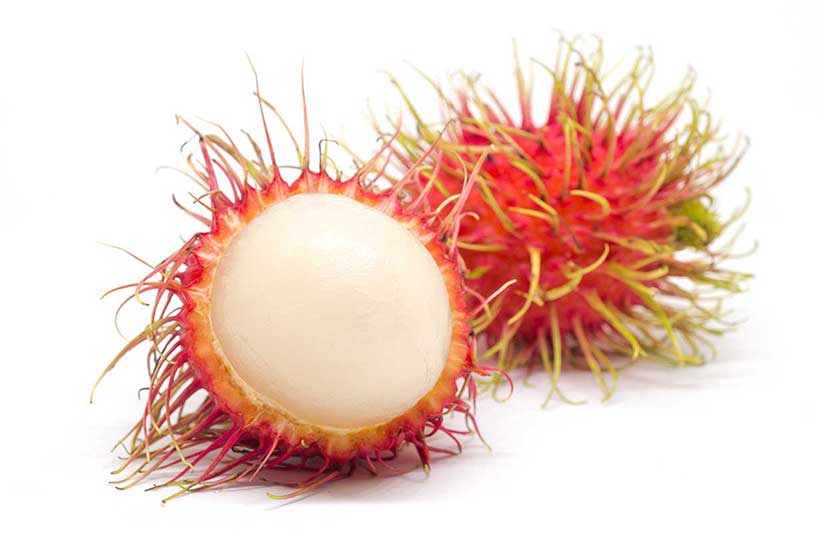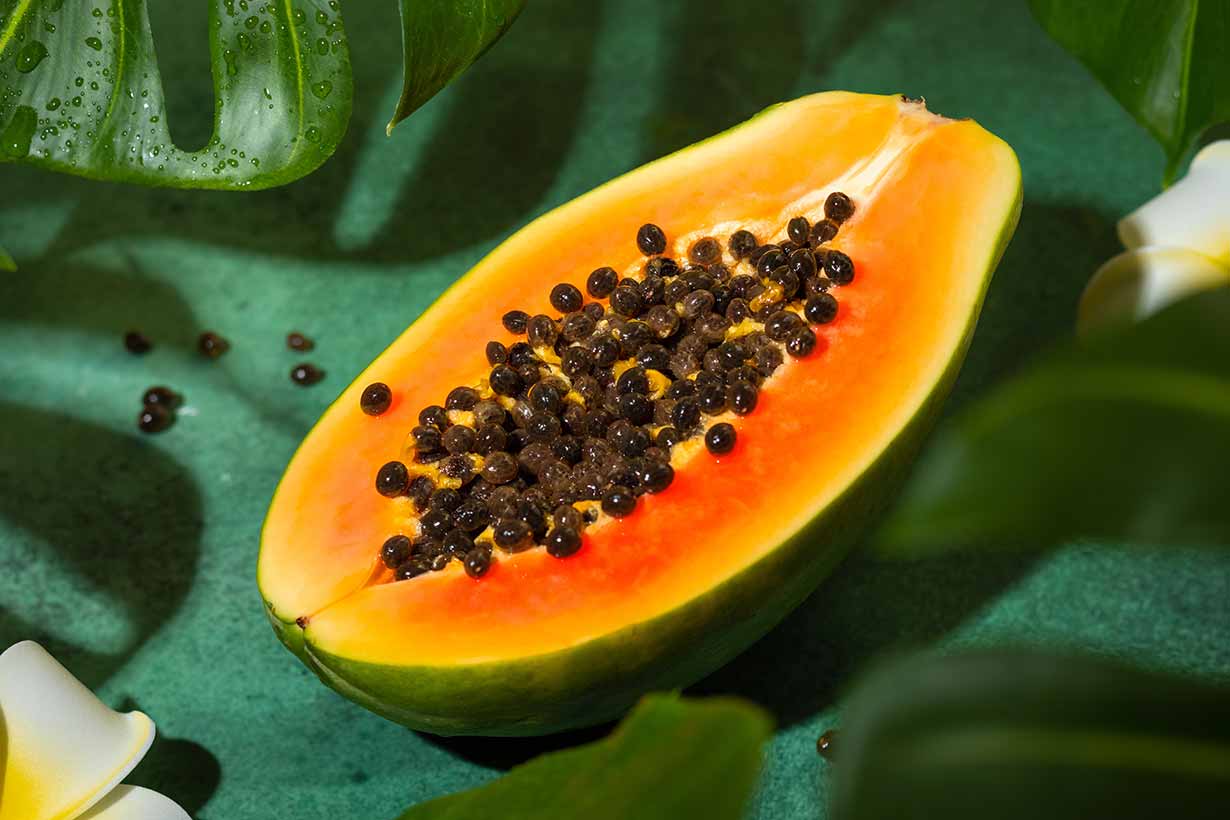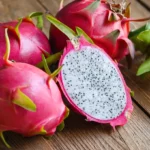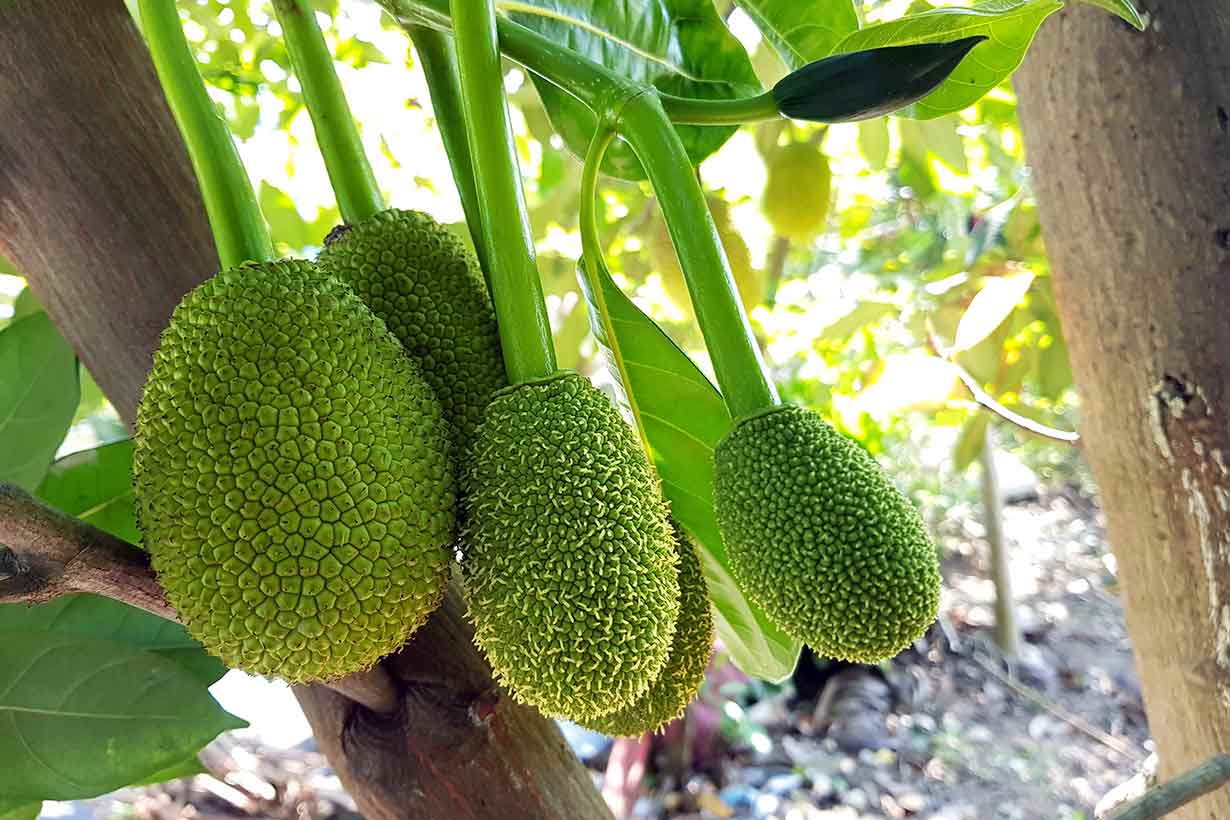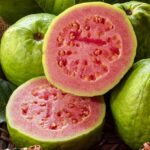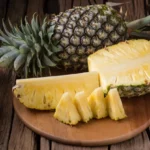Durian fruit is famous for its large size and intense smell.
The fruit has a spongey yellow flesh surrounded by a spiky skin, and it is known as the “king of fruits” in its native South-East Asia.
This article provides a guide to durian fruit, its nutritional values, and potential health benefits.
What Is Durian Fruit?
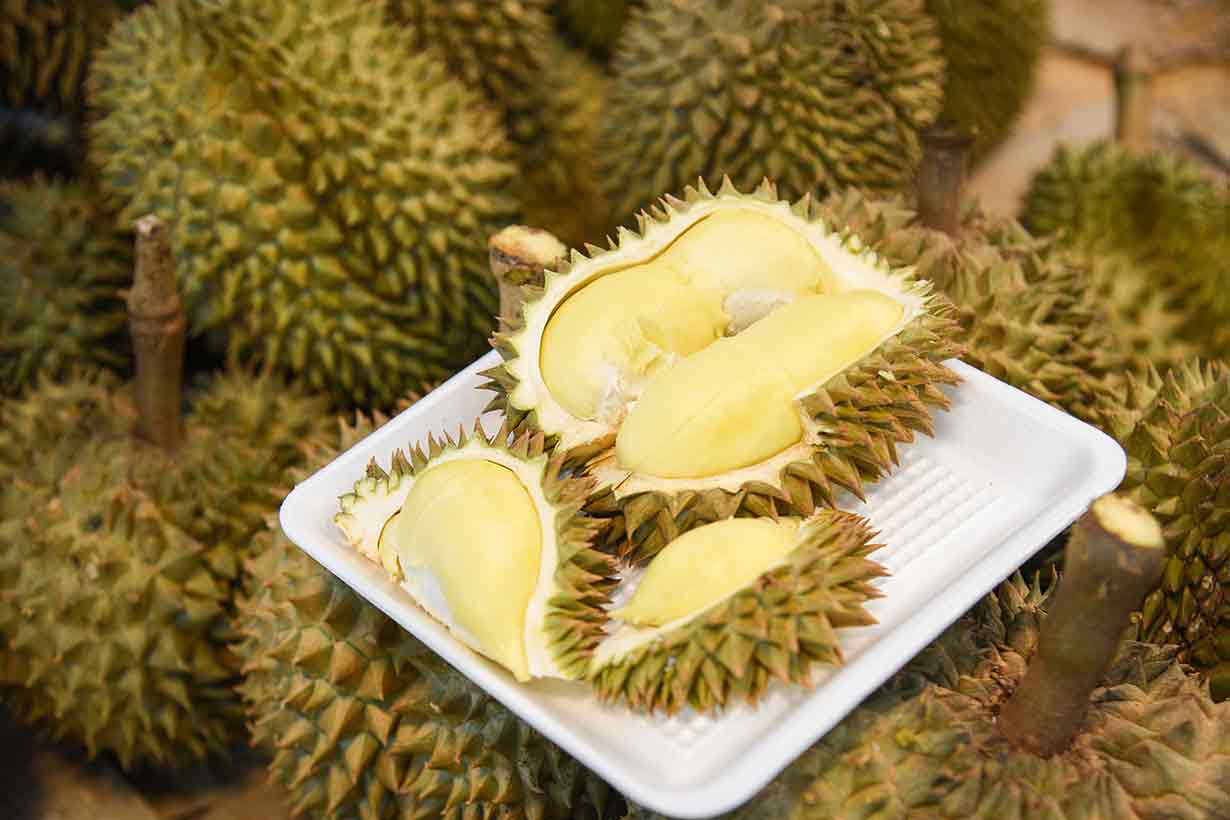
Among all fruit, durian is one of the biggest; it typically reaches a weight of between one and three kilograms, and its length can be anything up to 32 cm (1).
It is a tropical fruit native to South-East Asia, and it is most prevalent in Indonesia, Malaysia, and Thailand. The major importers of durian fruit are Hong Kong, Singapore, and Taiwan, and it can be more difficult to find in the Western world (2).
Interestingly, durian is one of a handful of fruits that are moderately high in both carbohydrates and fat. This nutritional aspect makes the fruit relatively unique alongside fruits like avocados and olives.
Furthermore, durian tastes quite unlike any other fruit. It has mild sweet notes, it tastes slightly nutty and even creamy, and it is very flavorful.
However, durian is not overly sweet like other tropical fruits can sometimes be. The bright yellow flesh of durian has a firm spongey texture, which becomes softer and more oily as the fruit ripens.
As a type of yellow fruit, it obtains its yellow pigmentation from carotenoids.
On the downside, one problem with durian is the unpleasant smell that it is known for. In truth, the fruit doesn’t smell as bad as some of the more exaggerated claims, but it certainly has a strong and pungent odor.
For this reason, according to the BBC, durian is banned on public transportation in Singapore.
Nutrition Facts
In a similar way to its taste and smell, durian also has a unique nutritional profile.
Using data from the USDA’s FoodData Central database, durian has the following nutritional values per 3.5 oz (100-gram) serving (3).
| Name | Amount |
|---|---|
| Calories | 147 kcal |
| Carbohydrates | 27.1 g |
| Fiber | 3.8 g |
| Fat | 5.3 g |
| Protein | 1.5 g |
While the USDA has not published data on the specific fatty acids the fruit contains, research into the nutritional value of durian found that (4):
- Monounsaturated fatty acids are the main fats in durian. They are followed by saturated fat, and the fruit also contains small amounts of polyunsaturated fatty acids.
- Oleic acid, a monounsaturated fat, is the primary fatty acid. The second most prevalent fatty acid is palmitic acid, which is a type of saturated fat.
Vitamins and Minerals
According to the USDA’s FoodData Central database and the FDA’s published daily values, here are the vitamins and minerals present in durian per 3.5 oz (100-gram) serving (3, 5).
Vitamins
- Vitamin C: 22% of the daily value (DV)
- Thiamin (B1): 31% DV
- Vitamin B6: 19% DV
- Riboflavin (B2): 15% DV
- Folate: 9% DV
- Niacin (B3): 7% DV
- Pantothenic acid (B5): 5% DV
- Vitamin A: < 1% DV
Although it isn’t as high in vitamin C as tropical fruits such as mango and pineapple, the primary vitamin in durian is vitamin C. This nutrient plays an important role in immune health and the body’s antioxidant system (6, 7).
Minerals
- Copper: 23% DV
- Manganese: 14% DV
- Potassium: 9% DV
- Magnesium: 7% DV
- Phosphorus: 3% DV
- Iron: 2% DV
- Zinc: 3% DV
- Calcium: < 1% DV
- Sodium: < 1% DV
The most concentrated mineral in durian fruit is copper. This important nutrient plays a crucial role in the immune system, red blood cell formation, and iron metabolism (8, 9).
Health Benefits
Here is an overview of research on the potential health benefits of durian.
May Lower Cholesterol
Research in animal models has demonstrated that durian fruit may potentially have a beneficial effect on the lipid (cholesterol) profile.
For example, several rodent studies have demonstrated that durian consumed alongside a meal led to substantial decreases in total cholesterol, LDL cholesterol, and triglycerides without affecting HDL levels (10, 11).
On this note, high levels of non-HDL cholesterol and triglycerides are thought to be risk factors for cardiovascular disease. Therefore, according to animal studies, durian may play a beneficial role in cardiovascular health (12, 13).
However, there are no relevant human trials that test this effect. Such research is necessary to be able to confirm that the findings in these animal studies apply to human health.
Durian Contains Various Bioactive Compounds
Nutritional analysis of durian fruit has shown that the fruit contains a range of carotenoids and polyphenols (4).
The fruit is a rich source of polyphenols that mainly belong to the flavonoid and anthocyanin classes of compounds, and they include:
- Apigenin
- Hesperetin
- Hesperidin
- Kaempferol
- Luteolin
- Morin
- Myricetin
- Quercetin
- Rutin
We can find Polyphenols within plant foods, and they are thought to have a range of potential health benefits.
However, the majority of the studies showing benefits from polyphenols have been in vitro (e.g. test tube) studies. It has been difficult to ascertain their effect within the human body.
For more on this topic, a narrative mini-review provides an informative guide to the role of polyphenols in human health.
Low Glycemic Index
Even though durian is moderately high in carbohydrates, it has a surprisingly low glycemic index, particularly when compared to other tropical fruits.
The glycemic index (GI) is a number that signifies how quickly the carbohydrates in a particular food digest into glucose. For those who need to control their blood sugar levels, such as individuals with type 2 diabetes, it can be helpful to know the GI rating of a particular food.
Foods with a GI below 55 are classed as low GI and have a lesser impact on blood sugar levels, foods with a GI between 55 and 70 are in the medium GI category, and food with a rating higher than 70 are in the high GI group (14).
On this note, durian has a glycemic index of 49. This figure is much lower than the GI of other tropical fruits such as papaya (58) and watermelon (55) (15).
Despite being high in carbohydrates, the fiber and fat content of durian likely help to slow its digestion and absorption, thereby blunting the blood sugar response.
For anyone looking for a tropical fruit a little lower in carbohydrates, longan fruit might be worth a look.
Health Concerns
Scientific research appears to have uncovered one potential downside to durian.
Durian May Increase Heart Rate
In a randomized trial, thirty-two participants aged between 20 and 22 years old consumed either 250 grams of durian, 500 grams of durian, or a placebo (16).
Each participant ate the durian in the same temperature-controlled room following a 10-hour overnight fast.
This study aimed to investigate the effects of durian on blood pressure and heart rate, due to past anecdotal accounts of durian raising heart rate.
What did the study show?
Firstly, the study demonstrated that durian did not increase blood pressure.
However, interestingly, there was a significant increase in heart rate between 30 minutes and 120 minutes after durian consumption in the participants consuming 500 grams.
The researchers concluded that they felt the high dose of sugar in 500 grams of durian was behind the increased heart rate, but that further research was necessary to confirm this.
Additionally, the researchers pointed out that the participants in the study were healthy adults in their early twenties. Thus, the effect on heart rate may potentially be more pronounced in older adults.
Why Does Durian Have Such a Strong Smell?
For anyone interested in why durian has such a strong and pungent smell, it is due to specific compounds in the fruit.
Durian contains various ‘volatile sulfur compounds’ known as VSCs. These compounds include hydrogen sulfide (present in rotten eggs) and ethanethiol (also given off by decaying onions) (17).
Ethanethiol is the most concentrated VSC in durian, but the fruit contains more than twenty individual VSCs. Also, these compounds increasingly form as the fruit ripens (17).
Durian vs. Jackfruit
Many people notice that durian has a physical appearance reasonably similar to another tropical fruit called jackfruit.
Jackfruit has the same yellow-colored flesh and a greenish spiky outer skin.
However, despite their similar appearance, the two fruits are relatively different.
Compared to durian, jackfruit can grow significantly bigger. It is the biggest fruit in the world, and in some cases, it can reach weights of up to 30 kilograms.
Jackfruit also has a much milder and sweeter flavor.
For more information, see this guide to jackfruit.
How To Eat Durian
Durian is a versatile fruit, and we can eat it in a broad number of ways, either hot or cold.
In Asia, people use the fruit to make ice-cream, chips, pancakes, crepes, fritters, and various other desserts.
On the other hand, durian features in a large number of cooked dishes too, such as curries, soups, and stews.
However, people mostly eat fresh durian on its own.
For anyone with whole durian fruit, there is an informative wikiHow guide to preparing the fruit here.
Where To Buy
Fresh durian can be very difficult to find in the Western world.
However, Asian supermarkets and specialist stores that sell imported fruit may stock it. It can also be easier to find dried or frozen durian in such places.
Additionally, a quick Google search for ‘where to buy durian + location’ should bring up some online stores that will deliver to your local area.
Final Thoughts
Overall, durian is a tropical fruit with an impressive appearance and a unique taste.
For those that can get past the smell, it’s an unusual and refreshing fruit to try and a good source of several essential nutrients.


